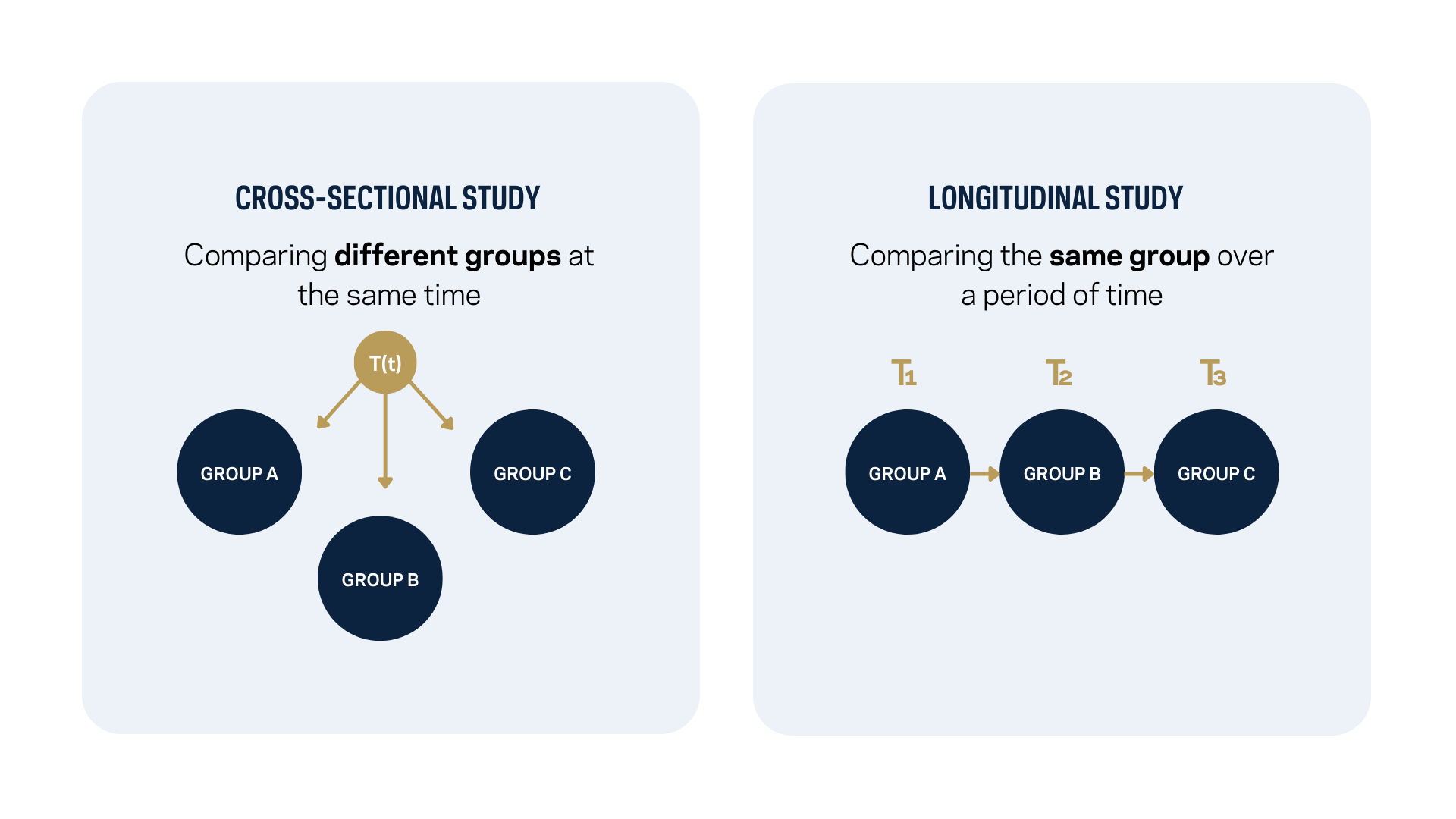Studies
Cross-sectional data/studies
Cross-sectional studies look at data from a population at one specific point in time. Comparisons are made between different samples, where each sample is collected at a different point in time.
Longitudinal data/studies
Longitudinal studies take measurements repeatedly from the same individuals over a period of time. These studies make comparisons of the same sample at different points in time. Each variable will have multiple measurements from each wave of data collection. Most longitudinal studies track the outcome or status of individuals. (See Panel and Cohort data for examples of types of longitudinal studies).

Cohort data/studies
A cohort study is a type of longitudinal study where observations are recorded for a group of people that share similar characteristics (e.g. age, location, race) in a given period. Each cohort consists of a different group of people. Researchers study differences between cohorts. For example, children born in 2010 and 2011 belong to two cohorts.
Panel data/studies
A panel study is a type of longitudinal study in which observations are recorded for the same subjects repeatedly over a long period. Through this methodology, researchers can analyze the precise changes that occur over time among the same subjects. For example, one can track the academic performance of a single student across their middle and high school years, providing a comprehensive and detailed understanding of how their GPA fluctuates over time.
Wave
A wave of data collection is a time point at which data was collected in a study. For example, a longitudinal study may have five waves of data collection or five different time points at which measurements were taken.